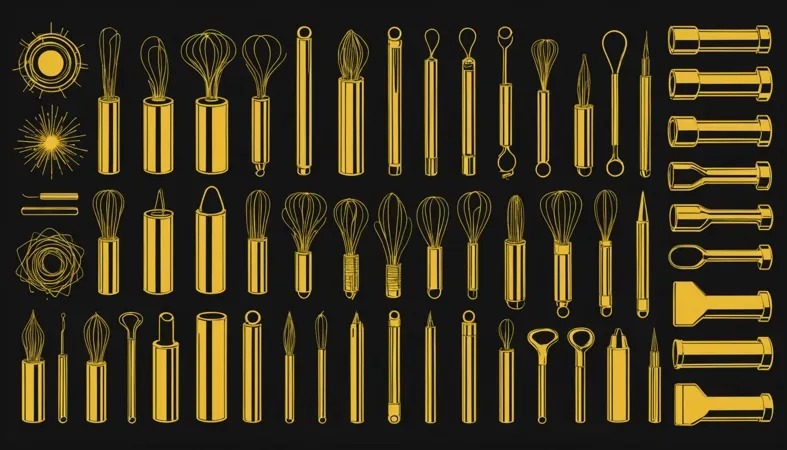Can You TIG Weld Brass? Discover Techniques, Tips, and Applications
Published on: May 21, 2025 | Last modified: March 4, 2025
By: Joe Carter
Brass is a metal made from copper and zinc. It’s known for its bright gold-like color and resistance to corrosion.
I’ve been asked many times, can you tig weld brass? It’s crucial to explore this topic because improper welding can lead to weak joints and failures. Personally, I’ve seen projects face issues due to incorrect welding techniques, and it’s hardly ever a pretty sight.
In this article, I’ll cover what brass is, types of brass and their weldability, prerequisites for welding, steps to tig weld brass, essential precautions, welding techniques, factors that influence welding, typical issues you might encounter, aftercare and advanced tips, advantages of this method, applications you should know, and what alternatives are out there. Also, if you’re curious, I’ll touch on can you mig weld brass to steel and more!
Contents
- Can You TIG Weld Brass?
- What is Brass?
- Types Of Brass and Their Weldability
- Prerequisites
- Steps to TIG Weld Brass
- Essential Precautions
- Types Of TIG Welding Techniques for Brass
- Factors Influencing TIG Welding Of Brass
- Typical Issues in TIG Welding Brass
- Aftercare, Inspection, and Advanced Tips for TIG Welding Brass
- Considerations for TIG Welding Brass in Different Environments
- Advantages Of TIG Welding Brass
- Applications You Should Know About
- What Are the Alternatives to TIG Welding Brass?
- Frequently Asked Questions (FAQs)
- Conclusion
- References
Can You TIG Weld Brass?
Yes, you can TIG weld brass. However, it can be tricky due to its high thermal conductivity. To achieve the best results, use a DC arc, and a filler rod made of 2% silicon bronze. Keep your heat low to prevent warping.
What is Brass?
Brass is an alloy composed mainly of copper (Cu) and zinc (Zn). It typically contains about 60% copper and 40% zinc, though mixtures can vary. This metal is known for excellent corrosion resistance and superior machinability. Brass has a density of approximately 8,400 kg/m³ (0.303 Lb/in³) and a melting point between 900 °C and 940 °C (1,650 °F to 1,720 °F).
I’ve worked with brass plenty, and I can say it’s tricky to weld. Transitioning to TIG welding on brass requires a good setup. Properly heating the metal while maintaining control is crucial.
A friend needed help with a plumbing project using brass. He discovered that welding brass to steel—or at least attempting to—poses challenges. It’s often messy with MIG welding, as the heat can warp the brass quickly. This raises concerns about the strength and durability of the weld.
Types Of Brass and Their Weldability
What are the types of brass for welding?
-
Red Brass
Red brass has a high copper content and a reddish color. You can weld it with a TIG welder. Use a 1/16-inch (1.6 mm) diameter ERCuZn filler rod and set your TIG machine to DCEN (Direct Current Electrode Negative) mode. Understanding the nuances of different copper welding techniques can further enhance your welding skills.
If you ever need to revert your work, you can learn more about removing welds effectively.
-
Yellow Brass
Yellow brass, which contains zinc, has a bright yellow hue and excellent workability. TIG welding is effective for yellow brass. Use a proper filler rod like ERCuZn-A and maintain a low amperage to prevent overheating.
-
Aluminum Brass
Aluminum brass contains aluminum, adding strength and corrosion resistance. You can weld aluminum brass using TIG. Use a silicon bronze filler rod and adjust your parameters for even heat distribution to create a strong bond.
Welding techniques vary and understanding specific methods, like those for welding an edge joint, can enhance your skill set.
-
Architectural Bronze
Architectural bronze is a durable alloy often used in construction. You can successfully TIG weld it. Use a compatible filler material like ERCuSn and keep your heat settings consistent to avoid warping. Proper technique is crucial when managing complex welding positions like vertical welding. Find detailed instructions on how to weld vertical successfully.
-
Leaded Brass
Leaded brass contains lead, improving machining but making welding more challenging. TIG welding is still possible; choose a low-heat rod. Ensure good ventilation to reduce fumes from lead, and set your welder to lower settings. Proper techniques are crucial for welding applications involving thin materials, and you can find expert methods on welding sheet metal.
You should now have a good understanding of brass types and their weldability. In the next part, we’ll discuss prerequisites.

Prerequisites
What do you need to prepare for TIG welding brass?
- TIG Welding Machine: You’ll need a TIG welding machine, such as the Miller Diversion 180. This machine provides the stable arc and control required for effective brass welding.
- Argon Gas Cylinder: Get an argon gas cylinder, like the Ador Welding Argon Cylinder. Argon prevents oxidation and maintains clean welds, which is crucial for brass’s soft metal properties.
- Tungsten Electrodes: Use 2% Thoriated tungsten electrodes, specifically the 1/16 inch (1.6 Mm) size. Higher precision is vital for delicate brass joints.
- Welding Filler Rod: Choose a filler rod designed for brass, like the Harris 38FL. It’s essential to match the melting point for strong, durable joints.
So far we covered the necessary prerequisites. Next, let’s look at the steps involved in TIG welding brass.
Steps to TIG Weld Brass
Here are the essential steps for welding brass successfully.
-
Set the Right Welding Machine
Adjust your TIG welding machine to DC negative polarity. Brass requires high heat, so set your machine between 70-130 amps. For brass thicker than 3 mm (0.12 In), aim for the upper end. Lower settings work better for thinner pieces to prevent warping or melting. Understanding different passes is essential, and exploring what a hot pass in welding means can enhance your welding technique and results.
A high-frequency start can help create a clean arc quickly. I’ve found that setting the machine slightly above your initial guess keeps the weld smooth.
-
Prepare the Brass Surface
Clean the brass thoroughly to remove oils and contaminants. Use a stainless steel brush made for brass; copper brushes can leave residues that affect the weld. A clean joint is essential for good penetration and a strong weld. Target a shiny surface without discoloration.
For optimal results, use acetone on a rag after brushing. Trust me, verifying surface cleanliness has saved me many headaches. A clean start makes a significant difference.
-
Choose the Best Tungsten Electrode
Select a 2% thoriated tungsten electrode, typically sized between 1.6 mm to 2.4 mm (1/16 to 3/32 in). A pointed tip focuses the arc’s heat better. Ensure the taper is about 2-3 times the electrode’s diameter for precise arc control.
I made the mistake of using a larger electrode early on—don’t repeat that! A smaller tungsten offers better control and reduces the risk of overheating the brass.
-
Position the Brass Pieces
Align your brass pieces for a tight joint. Aim for a gap of just a few thousandths of an inch. Uneven gaps can lead to inconsistent weld penetration and weak spots. Use clamps to secure everything, if necessary.
Consider using a copper backing bar to prevent burn-through on thinner sections. I’ve seen excellent results from this approach; it keeps heat from damaging the backside of your weld!
-
Begin Welding
Start your arc at the edge and move steadily along the joint. Maintain a travel speed of about 10-15 inches per minute (25-38 Cm/min) for typical applications. Watch the puddle; it should flow, not pool. Move too fast, and you won’t generate enough heat; move too slow, and the brass can burn away.
Pause briefly if you see inconsistencies. Slowing down for a few seconds can help you build up your bead and prevent problems. I’ve had to redo some areas, but it’s worth getting this step right!
That covers the process of TIG welding brass. Let’s now take a look at important safety measures to consider.
Essential Precautions
Let’s cover key safety measures for TIG welding brass.
- Wear Proper Gear: Always wear gloves and safety goggles, like 3M safety glasses. They protect your skin and eyes from sparks and heat.
- Ventilation: Ensure your workspace is well-ventilated. Use fans if needed to prevent inhaling harmful fumes and gases.
- Keep a Fire Extinguisher Ready: Always have a Class ABC fire extinguisher nearby. Brass can catch fire, so it’s a smart precaution.
- Check Equipment: Inspect your TIG welder and hoses for leaks before starting. Proper equipment prevents accidents and ensures quality work.
Remember, staying safe while welding brass is crucial for you and your workspace!
That covers essential safety measures for TIG welding. Let’s now take a look at the various techniques used for brass welding.
Types Of TIG Welding Techniques for Brass
Let’s explore the types of TIG welding techniques for brass: Direct Current Electrode Negative, Alternating Current, Pulsed TIG Welding, Using Filler Rods, and the Keyhole Technique.
-
Direct Current Electrode Negative
This technique, or DCEN, is effective for welding brass. Here, the workpiece is the positive electrode, and the tungsten is the negative. It’s suitable for thinner materials, providing good penetration and a clean bead, making it popular among welders.
-
Alternating Current Techniques
Alternating Current (AC) is an excellent choice for welding thicker brass. It reverses polarity, cleaning the tungsten and improving arc stability. This method is often used for larger projects, especially when a smoother finish is crucial.
-
Pulsed TIG Welding
This technique gives you control over heat input while welding. By cycling the current between preset high and low levels, you reduce distortion and weld heat-sensitive brass more effectively. In my experience, pulsed TIG is the best method for delicate brass components!
-
Using Filler Rods
Filler rods add material and create stronger joints. When welding brass, choose a rod of similar alloy for optimal results. Rods come in various diameters, such as 1/16 inch (1.6 Mm) or 3/32 inch (2.4 Mm), allowing you to match your welding needs precisely. Understanding different welding positions is crucial for achieving strong welds, especially when considering approaches like 1f to 4f welding techniques.
-
Keyhole Technique
This method creates a small hole in the base metal to weld through. It’s useful for thicker sections. It requires skill but produces strong joint connections, making it worth learning for those frequently working with heavy brass.
Factors Influencing TIG Welding Of Brass
What factors influence the ability to TIG weld brass effectively?
-
Material Thickness
Thickness makes a significant difference. Using a thicker piece of brass (Over 0.125 In or 3.2 Mm) requires more heat, risking distortion or burn-through.
-
Heat Input
Excessive heat can damage brass. Aim for a heat input of around 1-2 inches per minute (2.54-5.08 Cm/min) to achieve a solid weld without warping.
-
Filler Material Composition
Choose a filler that matches your brass type. For example, using silicon bronze is ideal for better fusion and strength with C360 brass compared to C220. It keeps the weld clean and reduces the risk of cracking.
-
Welding Speed
Maintain a steady welding speed. Going too slow can overheat and ball the tungsten, while going too fast results in weak, uneven beads; around 6 inches per minute (15.24 Cm/min) is effective for most setups. Ensuring electrical safety is crucial to prevent incidents, and many new welders need to be aware of common electric shock causes in the welding industry.
-
Joint Configuration
A proper joint design is crucial. Lap joints or T-joints offer better support; ensure the edges fit well for effective fusion.
Typical Issues in TIG Welding Brass
Let’s look at common problems when TIG welding brass.
-
Oxidation Issues
Brass oxidizes easily, forming a layer that weakens welds. You can identify oxidation by a dull green color on the surface. Clean the brass with a wire brush and use appropriate flux to address this.
-
Cracking During Cooling
Brass can crack as it cools rapidly in certain weld areas. Preheating the brass to around 93°C (200°F) can help manage this issue. Monitor for cracks after cooling.
-
Brass Distortion
Brass deforms under heat, causing misalignment. Look for warping after welding. Use shorter welds and allow cooling between passes to fix this.
-
Poor Joint Penetration
Brass can have inadequate penetration, resulting in weak joints. If the weld bead appears loose and round, adjust your amperage and travel speed for better fusion.
-
Incompatibility With Other Metals
Welding brass with other metals, especially steel, may lead to failures. Brittle joints are a sign of issues. Use an appropriate filler and avoid certain metal combinations to resolve this.
Aftercare, Inspection, and Advanced Tips for TIG Welding Brass
Here are detailed aftercare guidelines, inspection insights, and expert tips for successfully welding brass.
Aftercare Tips
After welding brass, clean the joint with a brass brush and a mild solution, like vinegar (Acetic Acid), for 30 seconds. Then, rinse with distilled water to prevent corrosion. Keep the weld area below 300°C (572°F) during cooling to maintain the integrity of the brass.
Inspection
Visually inspect welds with a magnifying glass for cracks and proper penetration. Use a non-destructive testing method, like dye penetrant, on areas exceeding 5 mm (0.2 Inches) in depth. I personally use the PVT-1 dye kit to verify weld quality.
Expert Tips
If you’re experienced, try using silicon-bronze filler that’s 1 mm (0.04 Inches) thicker than your brass base. Set your tungsten diameter to 2.4 mm (0.09 Inches) for better arc stability, and adjust your TIG machine to around 80-100 amps. Avoid burn-through by maintaining a steady feed rate of about 10 in (25 Cm) per minute.
Considerations for TIG Welding Brass in Different Environments
When you’re TIG welding brass, environment matters just as much as technique.
Environmental Conditions
Your surrounding environment can influence the welding process significantly. Here’s a breakdown:
| Condition | Impact on Welding | Recommended Action |
|---|---|---|
| Humidity | High humidity can lead to increased oxidation and porosity in the weld. | Weld indoors or use dehumidifiers to maintain a lower moisture level. |
| Temperature | Extreme cold can slow the cooling process, while excessive heat can alter brass properties. | Keep the workspace temperature moderate; ideally between 20-25°C (68-77°F). |
| Wind | Wind can disrupt shielding gas coverage, causing contamination. | Use windbreaks or weld in a sheltered area to maintain gas flow. |
| Pollution | Contaminants in the air, like dust or smoke, can affect the quality of the weld. | Clean the area before starting and consider using a portable filtration system. |
Surface Preparation Steps
A clean surface enhances weld quality. Follow these steps before you start welding:
- Remove Contaminants: Use a stainless steel wire brush.
- Acetone Wipe: Wipe down with acetone to eliminate residues.
- Drying: Allow the surface to dry completely before welding.
Be aware of these environmental conditions to set yourself up for success when you’re welding brass. You’ll find that your results improve significantly!
Advantages Of TIG Welding Brass
The main benefit of TIG welding brass is precision. A friend used it to join delicate brass components for a custom project, and it worked like a charm.
Additionally, TIG welding provides excellent control over heat input, produces clean welds with minimal cleanup, reduces distortion, and easily works on thinner materials. For those looking to understand the different techniques used in the industry, the various welding processes can greatly influence the quality of your work. It’s a great choice when quality matters!
For those wanting precision in crafting sophisticated connections, explore guidelines for welding 45-degree angles.
Applications You Should Know About
People use TIG welding on brass for various components. It has many applications, including:
- Electrical Contacts: It creates durable electrical connections in devices. Brass offers excellent conductivity, making it a popular choice.
- Musical Instruments: It’s used on brass instruments like trumpets. TIG welding preserves tonal qualities, which is crucial for professional musicians.
- Aerospace Components: It’s used to fabricate fittings and connectors. The high strength and corrosion resistance are vital in this industry.
- Plumbing Fixtures: It’s common for welding joints in faucets and valves. Brass’s strength and corrosion resistance make it ideal for these applications.

What Are the Alternatives to TIG Welding Brass?
Looking for other methods to achieve a strong bond with brass? You might consider MIG welding, which uses a wire feed to melt and join metals like brass. Products such as the Lincoln Electric PRO-MIG 140 are excellent for this purpose and can save time and effort.
If you prefer a simpler, less technical approach, you could use brazing with a torch. For instance, a Bernzomatic TS8000 can expertly join brass without the complexities of welding. This method is often preferred for delicate or thinner materials since it’s less likely to warp the metal.
Frequently Asked Questions (FAQs)
Now let us look at some common questions I typically get asked about welding.
What Rod for TIG Welding Brass?
For TIG welding brass, the recommended rod is ERCuZn which contains copper and zinc. This rod is crucial because its composition matches the brass’s properties, ensuring strong fusion. Using the right rod improves strength and finish, making your welds cleaner and more reliable. It is also important to address factors that cause weld spatter to maintain a clean work environment.
What is the Best Way to Weld Brass?
The best way to weld brass is using the TIG welding process. TIG welding offers better control and a cleaner weld due to its heat precision. This method also minimizes oxidation, which can weaken the joint, especially with brass. For optimal results, keep your filler material close to the base metal.
Why Can’t Brass Be Welded?
Brass can be challenging to weld due to its high thermal conductivity and tendency to become brittle heat-affected zones (HAZ). When exposed to high temperatures, brass can undergo granular recrystallization, weakening the weld joint. Proper technique and equipment can help mitigate these issues.
Can You MIG Weld Brass to Steel?
No, you can’t effectively MIG weld brass to steel using standard processes. Brass and steel have different expansion rates, leading to defects like cracking and poor bonding. If you must join them, consider brazing, which can offer better adhesion and strength with lower thermal impact.
Can You Weld Brass With Flux Core?
No, you generally shouldn’t weld brass with flux core. Flux core welding doesn’t provide the necessary heat control for brass joints. Instead, opt for TIG or MIG welding methods for better results; these methods allow for more precise welding and reduce the risk of localized overheating.
Conclusion
Phew, we covered a lot. We talked about what brass is, the types of brass and their weldability, prerequisites for welding, steps to TIG weld brass, essential precautions, and various TIG welding techniques. We also looked at factors influencing TIG welding, common issues you might face, aftercare, inspection tips, advantages of this method, applications for brass, and even some alternatives to TIG welding.
I trust these insights have been helpful. So, can you TIG weld brass? Yes, you can, but it requires attention to detail. Remember the key points: use a clean surface, choose the right filler, and be aware of its unique properties as brass can distort at higher temperatures.
For further expert guidance on welding techniques and best practices, visit What is Welding.
References
- American Welding Society. (2015). AWS D1.1/D1.1M: Structural Welding Code – Steel. Miami, FL: AWS.
Joe Carter is a retired welding professional with over 40 years of hands-on experience in the industry, spanning ship repair, structural welding, and even underwater projects. Joe is a master of MIG, TIG, and Stick welding. Passionate about mentoring the next generation of welders, Joe now shares his decades of expertise and practical insights to help others build rewarding careers in welding.
American Welding Society, Brass Welding Techniques, Electrical Safety, MIG Welding, TIG Welding, TIG Welding Applications, Types Of Brass, Welding, Welding Safety, Welding Techniques, Welding Tips







